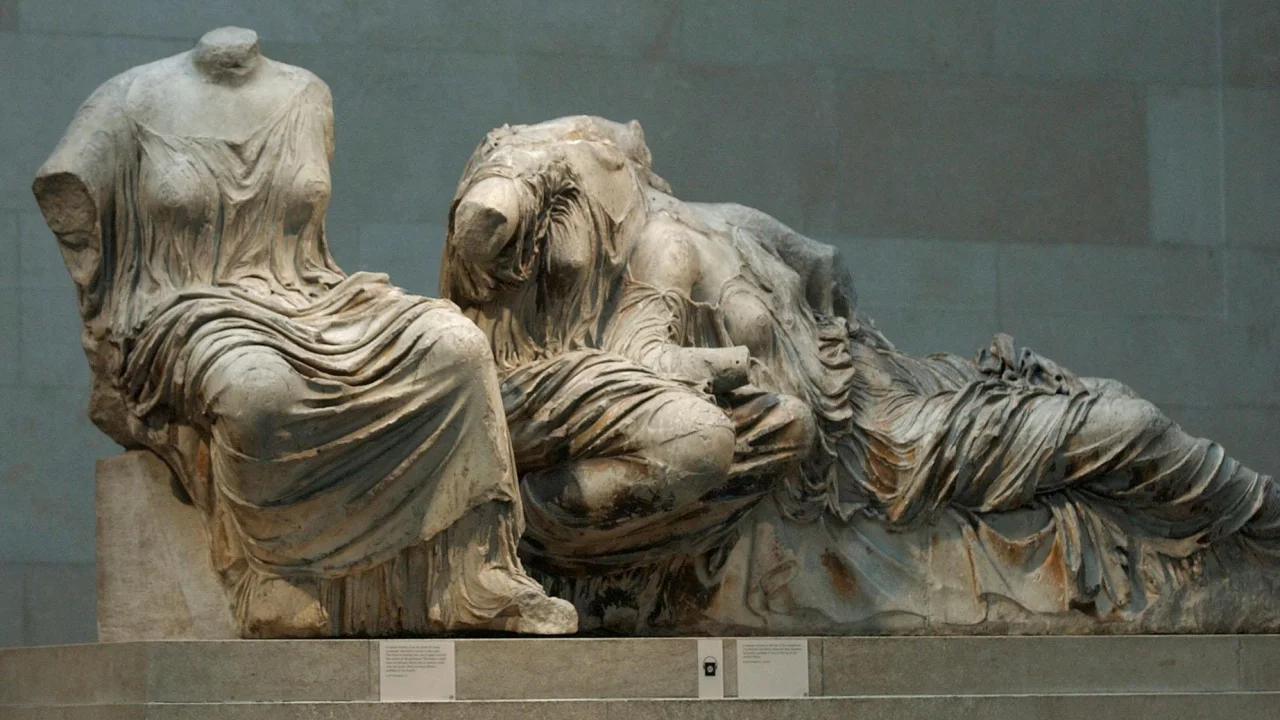
Today, Classical Greek marble sculptures are synonymous with a pristine whiteness, but a recent study has unraveled a vibrant past hidden beneath the surface. Researchers at the British Museum and King’s College London, using a noninvasive imaging technique, have unveiled traces of paint on the renowned 2,500-year-old Parthenon sculptures. These remarkable findings reveal that these ancient masterpieces were once adorned with colorful floral patterns and intricate designs.
Publishing in the journal Antiquity, this groundbreaking study involved the examination of 17 figures and a section of the frieze, with 11 of these pieces bearing traces of paint. Such revelations are particularly remarkable as paint rarely endures on ancient artifacts, especially in the case of the Parthenon sculptures, which have withstood the elements since their creation between 447 and 438 BC. Dr. Giovanni Verri, the lead author of the study, a conservation scientist at the Art Institute of Chicago (formerly a fellow at the British Museum), emphasized that the paint layers were incredibly thin and susceptible to environmental effects. Furthermore, during conservation treatments, these faint traces, initially mistaken for dirt, may have been inadvertently removed.
Greece has long sought the return of these sculptures, originally removed from the Parthenon temple in Athens in the early 19th century by British diplomat Lord Elgin during his time as ambassador to the Ottoman Empire, which ruled over Greece at the time.
The groundbreaking technique used to unearth these colorful secrets, known as visible-induced luminescence imaging, was developed by Dr. Verri in 2007. This method employs infrared light to detect microscopic remnants of paint invisible to the naked eye. Under ref light, the pigment “Egyptian Blue” was a highly prized pigment of its era, created using calcium, cooper, and silicon. It was renowned for its vivid blue color and reserved for royalty or depictions of deities.
This unique blue pigment was found in several locations on the sculptures, including the serpent tail of the mythical King Kekrops, the background space of statues Demeter and Persephone, and the garment worn by Dione, Aphrodite’s mother, where two flower petals were discovered near the cloth’s hem. Researchers admit that interpreting these small traces is a complex task, relying on comparisons with other workers of art.
Intriguingly, the study also unveiled a purple hue, which the researchers dubbed “Parthenon Purple”. This shade was particularly distinct because it was not created using the common ancient Mediterranean recipe that relied on shellfish. The presence of this purple couldn’t be detected through the imaging process but was discerned by the human eye. According to the study, classical texts alluded to this elusive purple shade, but its ingredients were closely guarded due to its immense value.
Michael Cosmopouls, a professor of archaeology and Greek studies at the University of Missouri–St. Louis, remarked that this study provides further evidence of the prevalence of colorful decoration in ancient Greek art, challenging the traditional Western belief that classical art was limited to plain white marble. These revelations shed light on the artistic and symbolic significance of the Parthenon and its sculptures.
Despite these exciting findings, Dr. Verri cautions that reconstructing the sculptures’ original appearance is a formidable challenge, as the imaging technique only detected blue paint. Additionally, recreating one of humanity’s greatest masterpieces in modern terms is no small task.
This study highlighted the absence of typical signs of keying or abrasion on the sculptures, which are typically seen as necessary for paint adhesion. According to William Wootton, an author of the study from King’s College London, this evidence demonstrates that both carving and coloring were conceived as integral components of the same artistic vision.
This revelation is not the first of its kind. In 2008, conservators at the Acropolis Museum in Athens discovered a greenish pigment on the West Frieze, featuring a horseman. Dr. Verri hopes that further advancements in imaging technology will soon reveal more colors hidden within these exquisite sculptures.








